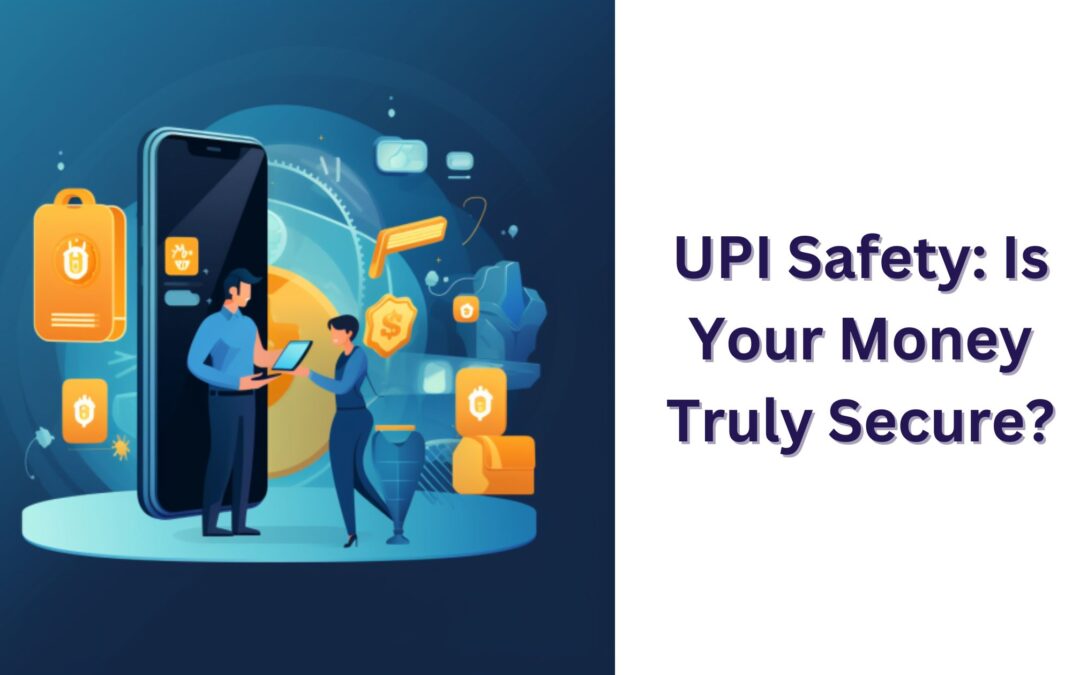The Unified Payments Interface (UPI) has emerged as a game-changer in the constantly changing world of digital transactions. It has transformed the way we manage money. UPI has gained widespread use among millions of Indian consumers thanks to its practicality and user-friendly features. However, despite its popularity, security and safety issues have also surfaced. In this blog, we’ll examine UPI’s safety features in this blog and offer details on its security features.
Understanding UPI: A Brief Overview
The National Payments Corporation of India (NPCI) developed the Unified Payments Interface (UPI), a real-time payment system. It enables users to link multiple bank accounts to a single mobile application, facilitating seamless transfers and transactions.
The Convenience of UPI: Key Features
Due to its convenient features and broad appeal, UPI has experienced tremendous growth.
- Instant Transfers: Unlike conventional techniques like NEFT or RTGS, which can take hours or even days, UPI enables instant fund transfers between bank accounts.
- 24/7 UPI transactions are convenient for users because they may be started and finished anytime, even after traditional banking hours.
- UPI allows consumers to link various bank accounts to a single UPI application, facilitating the management of their finances.
- Different Transaction Types: UPI allows many transactions, including bill payments, online purchases, and person-to-person transfers.
UPI Safety: Necessary Security Measures
While convenience is UPI’s forte, it gained wide acceptance with robust security measures. We can answer the question of “is UPI safe?” by elaborating on a few points. The safety of users’ financial information and transactions remains a top priority.
- Two-Factor Authentication (2FA): UPI transactions require two-factor authentication, typically involving a combination of something the user knows (PIN) and something the user has (device or SIM card).
- UPI PIN: Users must set a unique UPI PIN for their UPI-enabled accounts. This PIN is required for every transaction, ensuring that even if someone gains access to the device, one cannot conduct transactions without the PIN.
- Secure Channel: UPI transactions are conducted over specific channels using encryption protocols, safeguarding the data between the user’s device and the banking servers.
- Device Binding: UPI applications often bind to the device’s unique identifiers, adding an extra layer of security. This prevents transactions from being conducted through unauthorized devices.
- Transaction Limits: There are transaction limits set for UPI transactions. These limits vary based on the type of transaction and the UPI application. This helps mitigate potential losses in case of unauthorized access.
Common Threats and How UPI Addresses Them
Despite the stringent security measures, it’s essential to be aware of potential threats and understand how UPI addresses them:
- Phishing: Phishing attempts involve tricking users into revealing their sensitive information. UPI applications often display specific sender and receiver information to users before confirming transactions, reducing the chances of erroneous or fraudulent transfers.
- SIM Card Swapping: Unauthorized individuals sometimes attempt to swap SIM cards to gain access to one-time passwords (OTPs). UPI counters this by requiring a UPI PIN and the OTP for transactions.
- Malware Attacks: Malicious software can compromise the security of a device. However, UPI applications are designed to be resilient to such attacks, often requiring authentication even for opening the application.
- Unauthorized Access: UPI PINs and device binding make it difficult for unauthorized individuals to initiate transactions even if they gain access to a device.
Tips for UPI Safety: Staying Secure
Users play a crucial role in ensuring the safety of their UPI transactions. Here are some tips to stay secure:
- Secure Device Usage: Keep your device’s operating system and UPI applications up to date to benefit from the latest security patches.
- PIN Protection: Never share your UPI PIN with anyone, and avoid using easily guessable numbers or patterns.
- Beware of Phishing: Be cautious of unsolicited calls, messages, or emails asking for your UPI-related information. UPI applications will never ask for your PIN.
- Use Official Apps: Download UPI applications only from official app stores to avoid potential malware.
- Regular Monitoring: Keep a close eye on your transaction history and bank statements. This can help you identify unauthorized activities for the ultimate purpose of UPI safety.
- Safe Wi-Fi Usage: Avoid conducting UPI transactions over unsecured or public Wi-Fi networks. They may expose your data to potential threats.
- Unverified Links: Avoid clicking on unverified or suspicious links at all costs. They may belong to cybercriminals waiting to steal all your data, money, or information.
Regulatory Framework: NPCI’s Role
The National Payments Corporation of India (NPCI) plays a pivotal role in maintaining the security of UPI:
- Risk Management Systems: NPCI employs certain advanced risk management systems. They monitor transactions for unusual patterns and behaviors, helping to identify and prevent fraudulent activities.
- Reporting Mechanisms: NPCI provides mechanisms for users to report unauthorized transactions. This ensures timely action and support in case of security breaches.
- Collaboration with Banks: NPCI collaborates with banks to enhance security measures and keep up with emerging threats in the digital payment ecosystem.
Bottomline: UPI’s Safety in Your Hands
UPI offers unparalleled convenience without compromising security in a digital age where financial transactions are increasingly digitized. While no system is entirely immune to threats, UPI’s multi-layered security measures, regulatory oversight, and user-centric approach make it a safe option for conducting various financial activities.
As a responsible UPI user, staying informed and following best practices is paramount. Adopt good security habits and understand the mechanisms that safeguard your transactions. This way, you can confidently enjoy the benefits of UPI and also keep your financial information secure. Remember, knowledge is your best ally when it comes to UPI safety.

